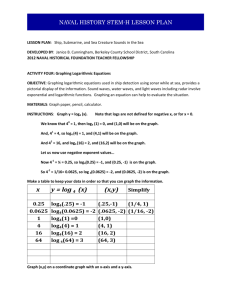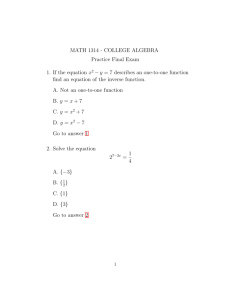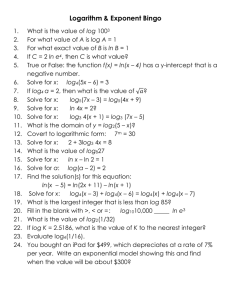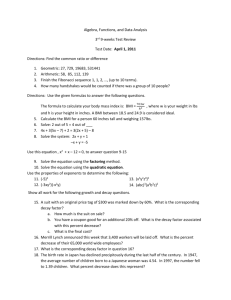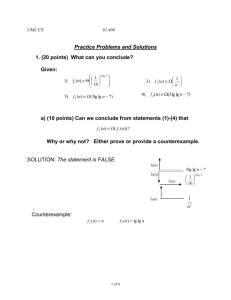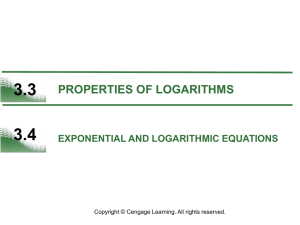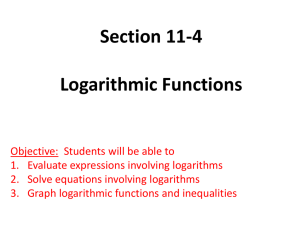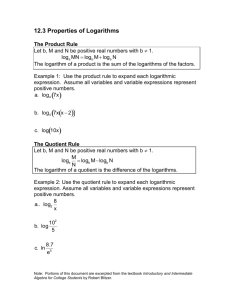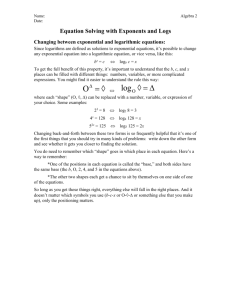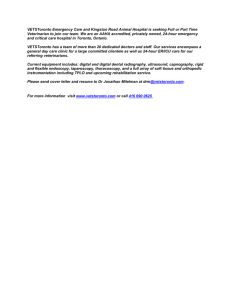x y = log 4 (x) (x,y)
advertisement
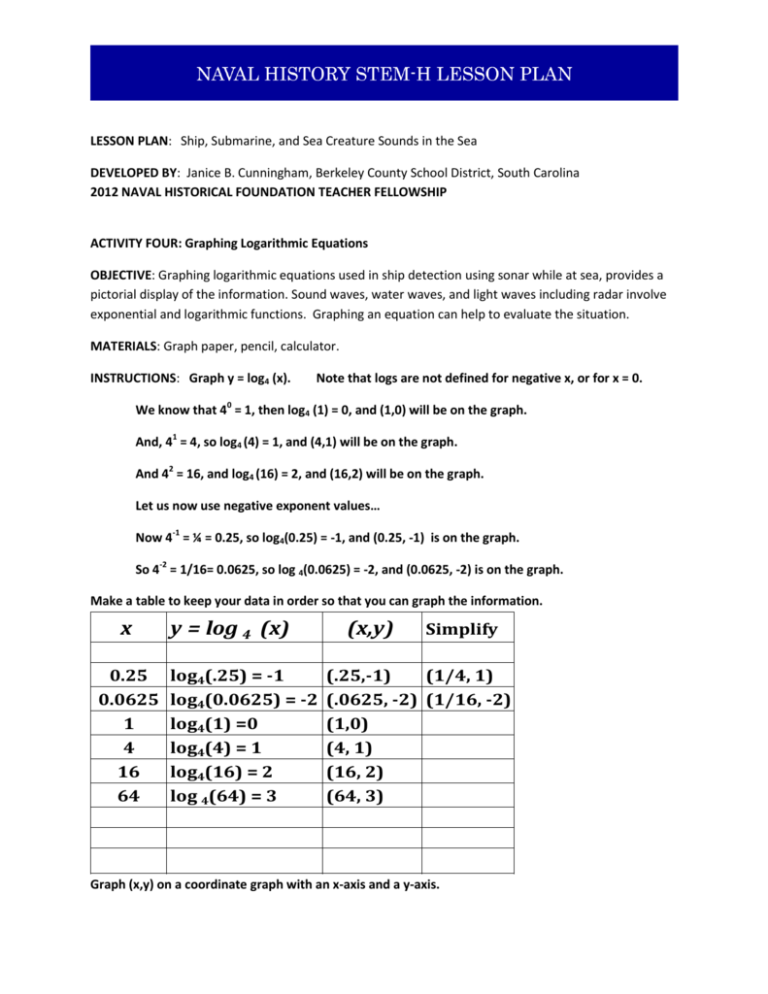
LESSON PLAN: Ship, Submarine, and Sea Creature Sounds in the Sea DEVELOPED BY: Janice B. Cunningham, Berkeley County School District, South Carolina 2012 NAVAL HISTORICAL FOUNDATION TEACHER FELLOWSHIP ACTIVITY FOUR: Graphing Logarithmic Equations OBJECTIVE: Graphing logarithmic equations used in ship detection using sonar while at sea, provides a pictorial display of the information. Sound waves, water waves, and light waves including radar involve exponential and logarithmic functions. Graphing an equation can help to evaluate the situation. MATERIALS: Graph paper, pencil, calculator. INSTRUCTIONS: Graph y = log4 (x). Note that logs are not defined for negative x, or for x = 0. We know that 40 = 1, then log4 (1) = 0, and (1,0) will be on the graph. And, 41 = 4, so log4 (4) = 1, and (4,1) will be on the graph. And 42 = 16, and log4 (16) = 2, and (16,2) will be on the graph. Let us now use negative exponent values… Now 4-1 = ¼ = 0.25, so log4(0.25) = -1, and (0.25, -1) is on the graph. So 4-2 = 1/16= 0.0625, so log 4(0.0625) = -2, and (0.0625, -2) is on the graph. Make a table to keep your data in order so that you can graph the information. x 0.25 0.0625 1 4 16 64 y = log 4 (x) log4(.25) = -1 log4(0.0625) = -2 log4(1) =0 log4(4) = 1 log4(16) = 2 log 4(64) = 3 (x,y) Simplify (.25,-1) (1/4, 1) (.0625, -2) (1/16, -2) (1,0) (4, 1) (16, 2) (64, 3) Graph (x,y) on a coordinate graph with an x-axis and a y-axis. Questions: 1. After you plotted your points, connect them. What type of shapes does it create? Describe it. 2. Why do you think it made this type of shape? 3. How does this shape /assist sonar and fire control specialists on submarines to calculate where other vessels are located? 4. Why do you believe logarithms are used? 5. Why do we need to condense our data into a small form of information?
